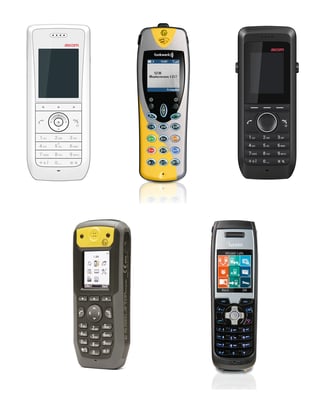The UK’s Health and Social Care sector employs over 3 million workers. Some work in care homes while others provide care for the elderly and vulnerable adults in the community. Those who work in residential care homes provide round the clock care for residents, including working nights. The numbers of staff members on any particular shift varies, generally with fewer staffing needs during the night. Staff may find they have to carry out some tasks alone, which makes them lone workers. Care home managers have a duty to ensure the safety of lone working staff, as well as the well-being of residents under their care. This blog post addresses some of the risks of lone working in care homes and presents methods of improving staff and user safety.
What are the Risks?
Care homes come in different shapes and sizes. Some homes offer supported living to vulnerable adults while providing them with a level of independence, while others provide more hands-on personal care. Although on the surface the services they offer may differ, there is a common thread of risk to users and staff. Take, for example, in supported living a care worker may need to check on individual residents alone. According to an NHS Protect report, the two most significant risks facing care workers are as follows:
- A lack of nearby support from a colleague which may mean that lone workers are unable to prevent an incident from occurring.
- A lone worker has a limited ability to withdraw, adequately defend themselves or render assistance should an incident occur with a service user or resident.
The employer must provide a safe working environment for employees. Fulfilling the requirement for a safe workplace also ensures a safe living environment for residents. Carrying out a workplace risk assessment will identify the environmental and operational risks to lone working (must include resident assessment, e.g. are they violent etc.). The employer can then provide adequate measures to reduce or eliminate the risks.
What are some Common Prevention Measures
Most care homes carry out risk assessments, provide training and implement some control measures to help protect employees when they are working alone. Some of these measures work most of the time, but they may rely on the individual and require effort, which often leads to non-compliance. Care homes are notorious for shortage of staff and given the current global pandemic staffing is a growing concern in residential homes. Examples of some measures care homes implement for lone working include the following:
- Mobile phones
- Means of raising alarm
- Buddy systems
- Checks by colleagues or supervisors
- Electronic check-in and check-out systems
- Use of lone worker devices
The list of prevention measures is not exhaustive, and the methods and risk assessment inform the practices each home puts in place in response to the risk. Each of the methods above has its advantages and disadvantages. However, the limitations may have an impact on the safety of employees and residents. Is there a solution that overcomes the shortcomings of the other control methods?
IP DECT Technology for Safeguarding in Care Homes
Using technology to ensure the safety of lone workers is not a new thing. There are dozens of systems available today but none as versatile as IP Digitally Enhanced Cordless Telecommunications (DECT). DECT phones are small, lightweight and rugged, everything you need in a device that you carry around with you. The phones do not rely on 2G, 3G or 4G wireless signals meaning they can be used in areas with no coverage.
Holly Lodge is a unique housing development run by the charity Choice Support to provide enabling accommodation for adults with autism and learning disabilities. Due to the challenging behaviour of some of the residents within the assisted living development, Choice Support wanted to ensure the safety of care providers and its residents.
The main challenges were raising discrete alarms and ensuring care workers felt safe looking after residents. The client accepted ANT Telecom’s proposal for an IP DECT system with rugged handsets equipped with a panic button. The installation also included room locators and an alarm server for alarm processing and logging. Care staff now feel safer and colleagues can respond to alarms quickly improving the overall safety of staff and residents. Read more of the case study here.

Why Choose DECT for Your Care Home?
If your care staff work alone, then they need to feel safe and secure when they are doing so. Having a reliable method of raising the alarm without disturbing the entire care home is one advantage DECT phones offer. They are customisable for use with silent alarm and messaging systems, allowing staff to respond quickly to assist a colleague or service user in trouble.
DECT phones improve site communication overall with staff adoption much higher than comparable technology. All lone working staff will have the capability to stay in touch with the nurse’s station or control. This has the added advantage of benefiting residents because care staff have easy access to records, care plans etc.
ANT Telecommunications specialise in a range of lone worker systems and devices including IP DECT systems. Give your staff and service users peace of mind and ensure lone workers get the assistance they need fast in an emergency. You can find out more about the range of products and solutions for lone workers and critical alarm management here.



